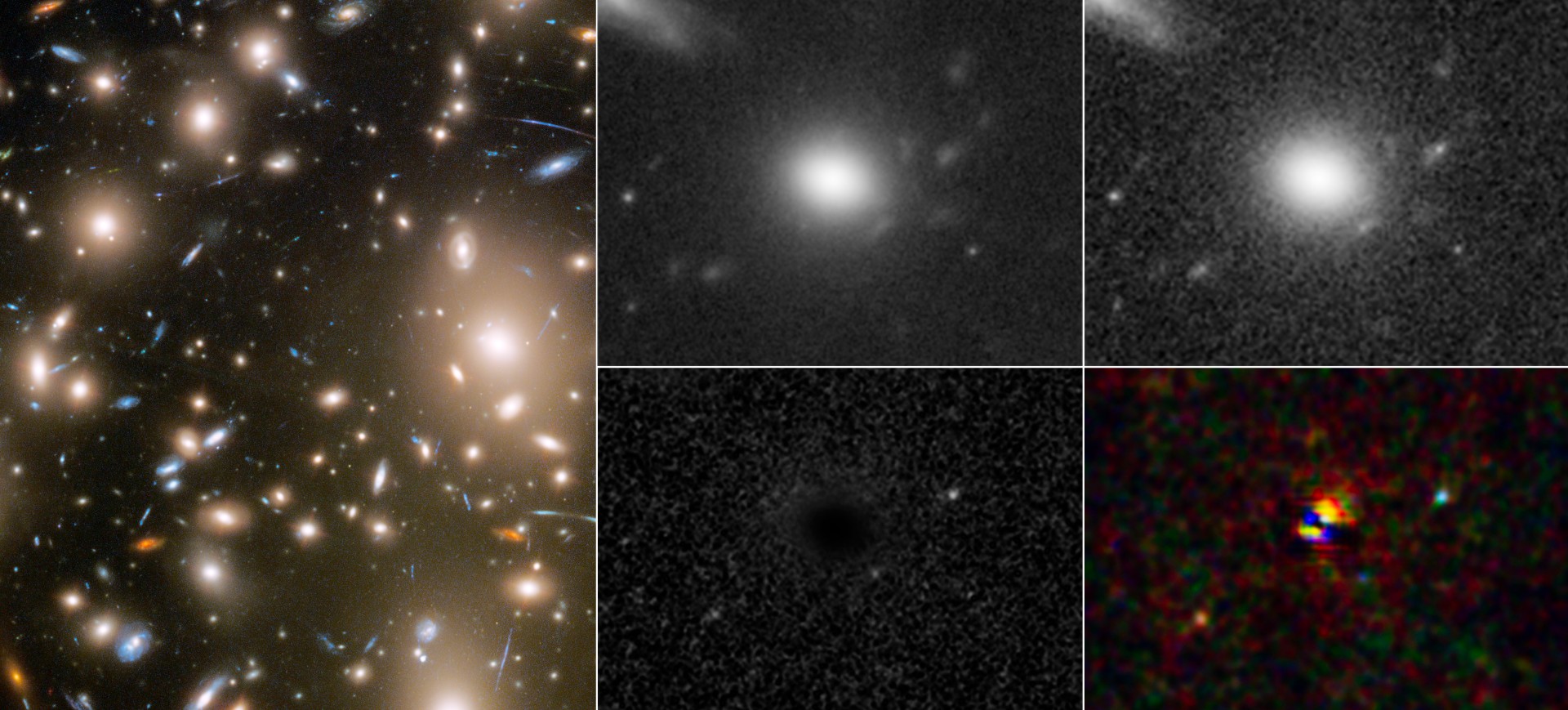Right place, right time: Hubble telescope captured a supernova as it exploded
Three images captured the progression of the supernova just hours after the initial explosion.
Talk about being at the right place at the right time.
In 2010, the Hubble Space Telescope captured several images of the Abell 370 galaxy cluster. In itself, that's hardly a groundbreaking feat. But a team of astronomers systematically reviewing archival Hubble images discovered something incredible in those images: an image of an infant supernova that exploded some 11.5 billion years ago, taken just hours after the star's death.
The team, led by postdoctoral researcher Wenlei Chen of the University of Minnesota, was looking for gravitationally lensed, transient events, and that's exactly what the supernova is. It's hidden behind Abell 370, but because light bends around the galaxy cluster due to its gravitational force — an effect known as gravitational lensing — we can actually see it from our vantage point, albeit in a warped manner.
Related: Hubble telescope spies a cosmic 'spider web' containing clues to dark secret
Inputting the Hubble data into models and analyzing details in the images like brightness and color, Chen and his team determined that the original star that had gone supernova was likely a red supergiant with a diameter approximately 530 times that of the sun.
They also determined that the first image in the series of three was taken by Hubble just six hours after the explosion following the core collapse, with the second and third being taken about 10 and 30 days after the explosion, respectively.
And because the supernova has high redshift — the wavelengths of light are stretched and shifted towards the red side of the spectrum due to the expansion of the universe — the astronomers were able to estimate the supernova's age to approximately 11.5 billion years old, making it one of the oldest and most distant supernovas we've ever seen.
Breaking space news, the latest updates on rocket launches, skywatching events and more!
The team hopes that their modeling will aid the study of similar distant supernovas, should they be discovered. Those discovered, in turn, would be able to progress the study of stellar populations at high redshift.
A paper based on this research was published in the journal Nature today.
Follow Stefanie Waldek on Twitter @StefanieWaldek. Follow us on Twitter @Spacedotcom and on Facebook.

Space.com contributing writer Stefanie Waldek is a self-taught space nerd and aviation geek who is passionate about all things spaceflight and astronomy. With a background in travel and design journalism, as well as a Bachelor of Arts degree from New York University, she specializes in the budding space tourism industry and Earth-based astrotourism. In her free time, you can find her watching rocket launches or looking up at the stars, wondering what is out there. Learn more about her work at www.stefaniewaldek.com.

